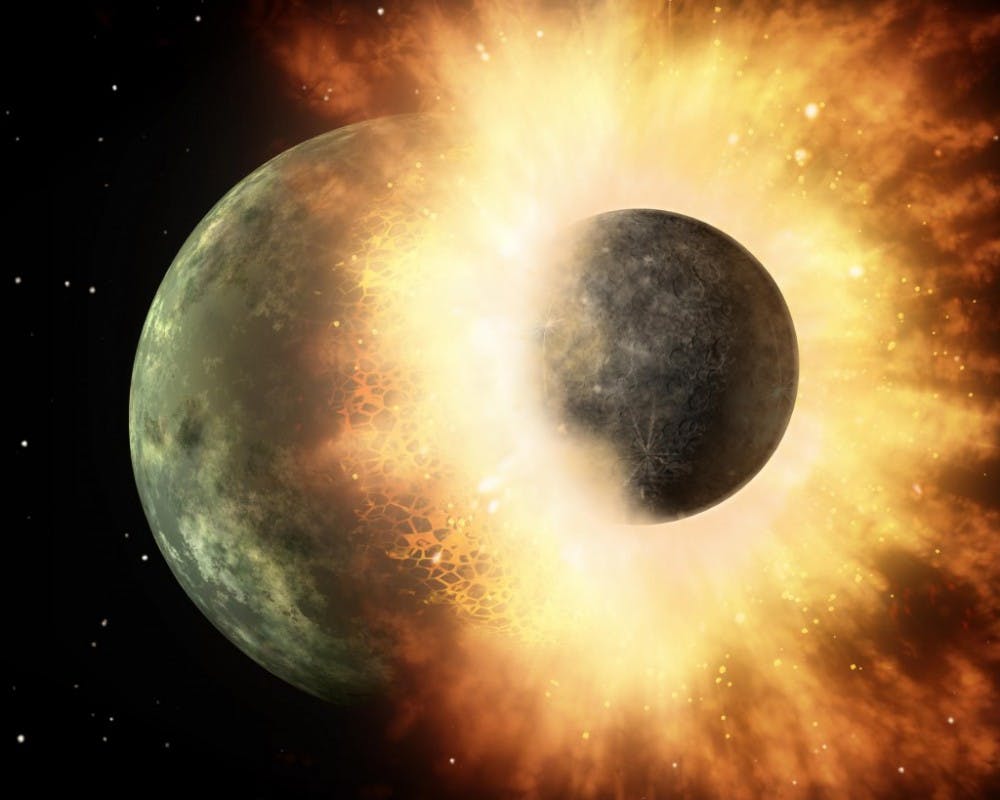Geochemists from the University of California, Los Angeles (UCLA) have reported that the moon was formed by a colossal collision between the Earth and a “planetary embryo” called Theia roughly 100 million years after the Earth formed. While scientists were aware of this collision for quite some time, many thought that the Earth and Theia collided at an angle of 45 degrees or more. However, new evidence suggests that the impact was more likely entirely head-on.
By analyzing seven rocks that were brought from the moon by Apollo missions 12, 15 and 17, as well as six volcanic rocks from the Earth’s mantle, the scientists at UCLA have found evidence that thoroughly substantiates this new claim.
The chemical signature of the rocks’ oxygen atoms revealed the key to reconstructing the collision. While there are rare isotopes of heavy oxygen atoms, like oxygen-17 and oxygen-18, more than 99.9 percent of Earth’s oxygen is isotope oxygen-16, which consists of eight protons and eight neutrons in each oxygen atom. Atoms of oxygen-17 and oxygen-18 have one and two extra neutrons, respectively. All of the planetary bodies in our solar system, the Earth and Moon included, have a unique ratio of oxygen-17 to oxygen-16, providing somewhat of a “fingerprint” for each celestial body.
While German scientists in 2014 reported that the Moon and Earth have different isotopic ratios, Edward Young and his team of geochemists and cosmochemists at UCLA reached different conclusions. Using cutting-edge technology like UCLA’s new mass spectrometer, the team meticulously calculated and measured the compositions of the rock samples and found that the oxygen isotopes from the moon were indistinguishable from the oxygen isotopes from Earth.
The implications of the Earth and Moon having the same isotopic ratio are quite far-reaching. If the Earth and Theia had collided at a 45-degree angle, the impact would have been a glancing side blow, resulting in the moon mainly made up of particles from Theia. If this were the case, the Earth and Moon would have vastly different isotopic ratios. However, a head-on collision is more consistent with the results and correlates with the findings of the Earth’s and Moon’s shared chemical signature.
“Theia was thoroughly mixed into both the Earth and the moon, and evenly dispersed between them,” Young, the lead author of this study, said. “This explains why we don’t see a different signature of Theia in the moon versus the Earth.”





